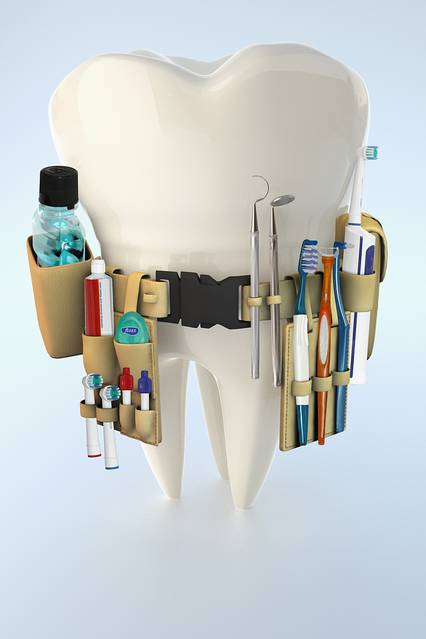Some days you can find Christy Jo Fogarty at Children’s Dental Services in Minneapolis, checking kids for cavities. Other times she’s at an elementary school or driving a mobile clinic to towns beyond the suburbs, where shopping centers abruptly give way to cornfields.
Many of the 4,000 children she sees each year have never been to a dentist, Ms. Fogarty says. As a dental therapist, she focuses on those without much access to care—something all too common in Minnesota’s immigrant and rural communities. Only about one-third of dentists nationally, according to a 2014 survey by the American Dental Association, take patients covered by public assistance, such as Medicaid.

Ms. Fogarty holds dental therapy license No. 2 from the state of Minnesota, which in 2009 became the first state to recognize these midlevel professionals. Dental therapists are not massaging patients’ teeth and gums; they are specialists with years of training. At the University of Minnesota, getting a dual bachelor’s in dental hygiene and master’s in dental therapy requires 32 months of dedicated course work, taking the same classes as dental students who stay for the full program. After passing a state exam, dental therapists are authorized to clean teeth and fill cavities, though they cannot do orthodontic or reconstructive work.
ENLARGE
Photo: Getty Images/Ikon Images
Once in the field, therapists must work under the supervision of a licensed dentist, either in private practices or a public health clinic like the one where Ms. Fogarty works. Seven years after the first dental therapists were licensed, there are now more than 60 across the state.
Children’s Dental Services, Ms. Fogarty’s employer, treats about 30,000 patients each year, mostly from the Twin Cities’ Hispanic, Hmong and Somali immigrant communities. The dental therapy model was first adopted by nonprofits and community clinics to lower costs, says Karl Self, the director of the University of Minnesota’s therapy program. But now, Dr. Self adds, private practices are hiring dental therapists, too. “We’re seeing that dental therapists can add value to the overall oral health team,” he says.
A few other states—Alaska, Maine and Vermont—have also authorized dental therapy. A Native American tribe in Washington state has licensed a therapist who was certified in Alaska. Two Oregon tribes have been approved to hire a dental therapist under a pilot program.
Other states are considering dental therapy, but professional associations of dentists stand opposed. Take Michigan, where state Sen. Mike Shirkey introduced a dental therapy bill in June. Shortly thereafter, the Michigan Dental Association urged its members to oppose the bill. The association says that Michigan already has 7,500 dentists and 10,300 hygienists, which it insists should be enough to cover the state’s needs.
Mr. Shirkey says that despite the raw numbers, some communities face shortages. Guidelines from the U.S. Department of Health and Human Services suggest that an area has a shortage if there are more than 5,000 people for every dental provider. As of 2014 there were 212 such areas in Michigan, covering more than 876,000 people. Seventy-six of the state’s 83 counties have at least one designated shortage area, with the highest concentrations in the urban cores of Detroit and Flint and rural areas of the Upper Peninsula. Sixty-one percent of Michigan’s Medicaid-eligible children didn’t receive any dental treatment in 2011, according to an analysis by the Pew Charitable Trust.
Part of the problem is the nature of dentistry. Many dentists graduate with high debt and naturally set up practices in wealthy areas where people can afford regular care. Mr. Shirkey says the state’s persistent shortages show the current system isn’t working. “It’s time to evaluate what are our other options,” he says. His proposal would require dental therapists to spend the majority of their time treating patients on Medicaid or without insurance. It would also require therapists to work with licensed dentists, as in Minnesota, so they wouldn’t be in direct competition.
Staff at the Federal Trade Commission have urged dental-school accreditors to clear the way for midlevel professionals like therapists, arguing that they can “increase the output of basic dental services, enhance competition, reduce costs, and expand access.” But in dozens of states the idea is contentious. A bill in Texas was torpedoed last year after the state’s dental association argued that therapists were insufficiently trained and would put patients at risk.
In Minnesota, though, a 2012 study by the W.K. Kellogg Foundation found that dental therapists increased access to care while providing “competent, safe and effective” treatment. But the proof is in the sugar-free pudding: John Powers, a dentist in Montevideo, Minn., in the state’s rural western reaches, says dental therapists have helped his private practice grow. He recently hired a fourth therapist.
It’s easy to forget now that Minnesota’s transition was fraught, too. “It was awful,” Ms. Fogarty says, “just terribly contentious.” She recalls overhearing the dean of her dental school telling other students that they wouldn’t have jobs thanks to the new therapists. “There’s no reason for us to be against each other,” she says. The point isn’t to compete, it’s to get dental care for those who need it—like the 6-year-olds whose smiles she sees every day.

